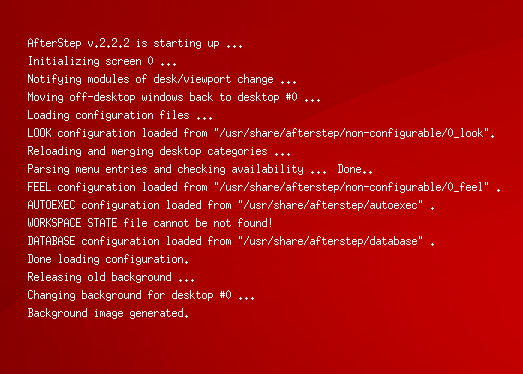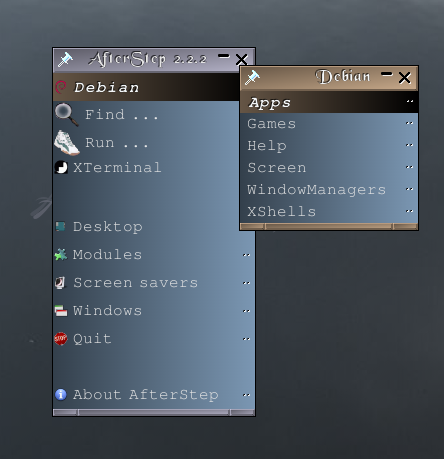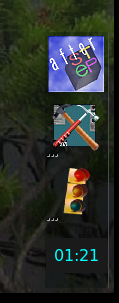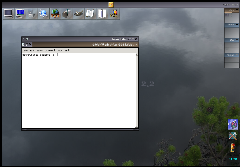The Ubuntu default desktop uses the Gnome window manager, but there are a number of different window managers that can be installed, including KDE, Xfce, Blackbox and Fluxbox.
Installing AfterStep is a simple process. You will want to make sure that you have selected the alternate install repositories.
Open a terminal window and use the following command:
sudo apt-get install afterstep
Once the install is complete, log out and click on the Options button in the lower left hand corner:
You will see a menu listing all of the window managers installed on your system. Select AfterStep from the menu, and continue to log in.
You will see this screen initially, which shows that AfterStep is setting up your system.
AfterStep is a very "busy" environment. Once you are logged in, Left click on the desktop, and you will see the root menu, that you can launch other applications from.
You will see the launch bar, which are just shortcuts to specific programs:
In the lower right hand corner, you will see the AfterStep widgets, applets, or whatever you want to call them.
Here's a screenshot of the full desktop:
More information about AfterStep can be found on the homepage.






